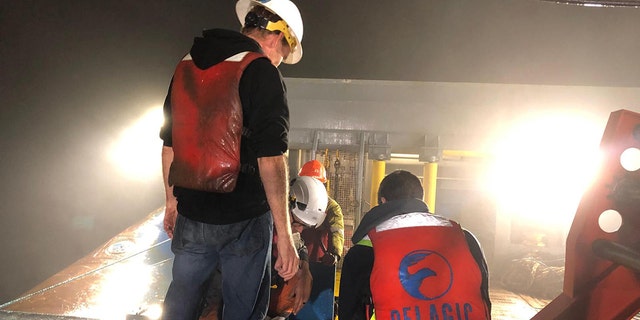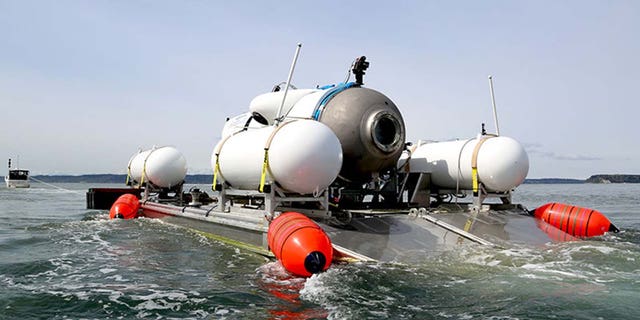Titan submersible recovery efforts continue with help of remotely operated vehicle
Efforts to recover the remains of the Titan submersible that suffered a catastrophic implosion near the Titanic wreckage are currently underway, and as of Sunday, had descended to the seafloor for a fourth dive.
Last Thursday, the U.S. Coast Guard confirmed that a debris field located about 1,600 feet from the wreckage of the Titanic was in fact that of the missing Titan submersible.
The underwater vessel was carrying five men on board when it lost contact with its surface ship about an hour and 45 minutes after descending to the Titanic.
South Wellfleet, Massachusetts-based Pelagic Research Services (PRS) was contacted by OceanGate, the company behind Titan, for use of its remotely operated vehicles, or “ROVs,” to assist with the search.
MISSING TITAN SUBMERSIBLE FOUND: SEE THE KEY VESSELS THAT AIDED THE DESPERATE SEARCH
The ROV, which is named Odysseus 6K, found the “debris field” in the search area for OceanGate’s missing submersible on Thursday, June 22.
Now, under command of the Transportation Safety Board of Canada and U.S. Coast Guard, and assisted by the U.S. National Transportation Safety Board, PRS is continuing to use the ROV to recover Titan.
On Sunday, Odysseus was on its fourth dive to the wreckage.
MISSING TITANIC SUBMARINE FOUND, CREW KILLED IN DEEP-SEA CATASTROPHE, COAST GUARD SAYS

“We continue to work tirelessly in our support role of this mission, alongside the incredible crew of Horizon Arctic, led by Cpt. Adam Myers,” Ed Cassano, the CEO of PRS said in a press release.
Since Odysseus’ subsequent dives following its initial dive to the site have allowed the company to support the U.S. Coast Guard and U.S. Navy-led investigation and recovery.
Cassano said PRS has been successful in identifying objects of interest as directed by onboard command personnel.
OCEANGATE PASSENGER SULEMAN DAWOOD WAS ‘TERRIFIED’ OF TITANIC TRIP, AUNT SAYS

The company also said the ROV’s ability to lift heavy objects continues to be utilized in the mission.
“This recovery phase is a remarkably difficult and risky operation, especially at this depth,” PRS spokesperson Jeff Mahoney said. “Given its continuous operation under the incredible atmospheric pressures, temperatures, and environmental stresses, it’s a testament to the skill of the team and the engineering of Odysseus.
“We are very proud to have the ability to perform a complete array of tasks as this investigation evolves,” he added.
Odysseus was designed by PRS and built by MPH Engineering. It officially went into service in 2016.
Read the full article Here


